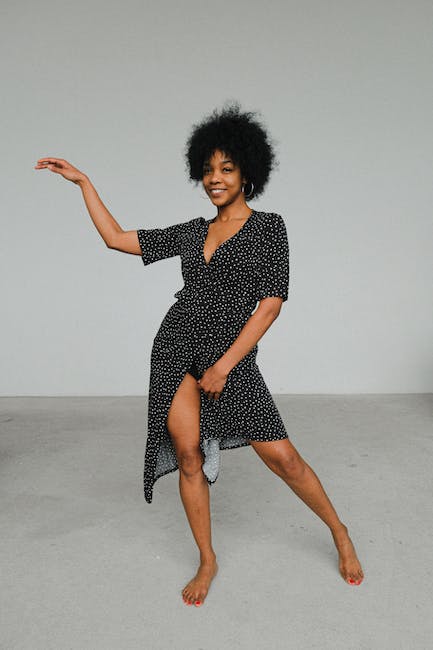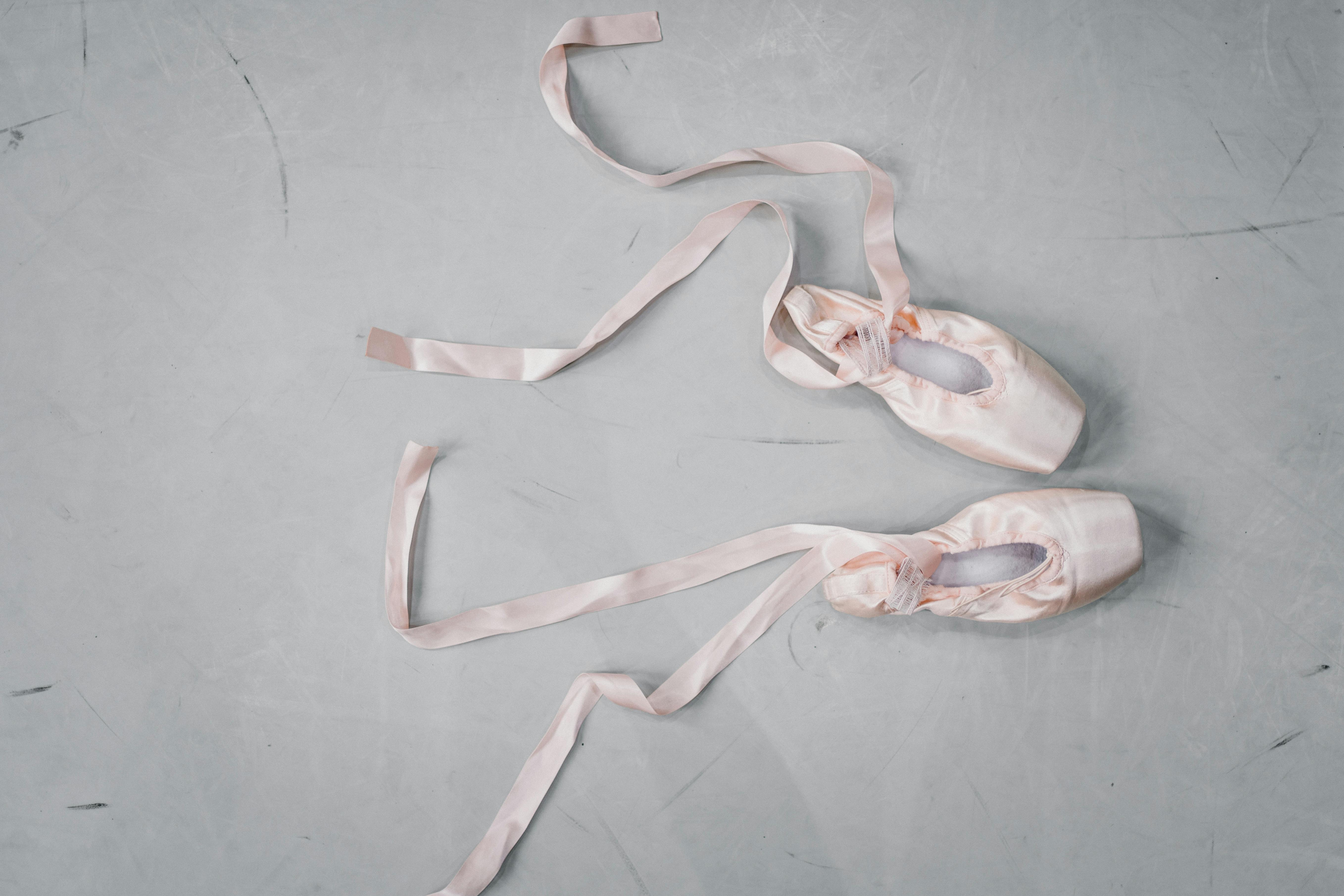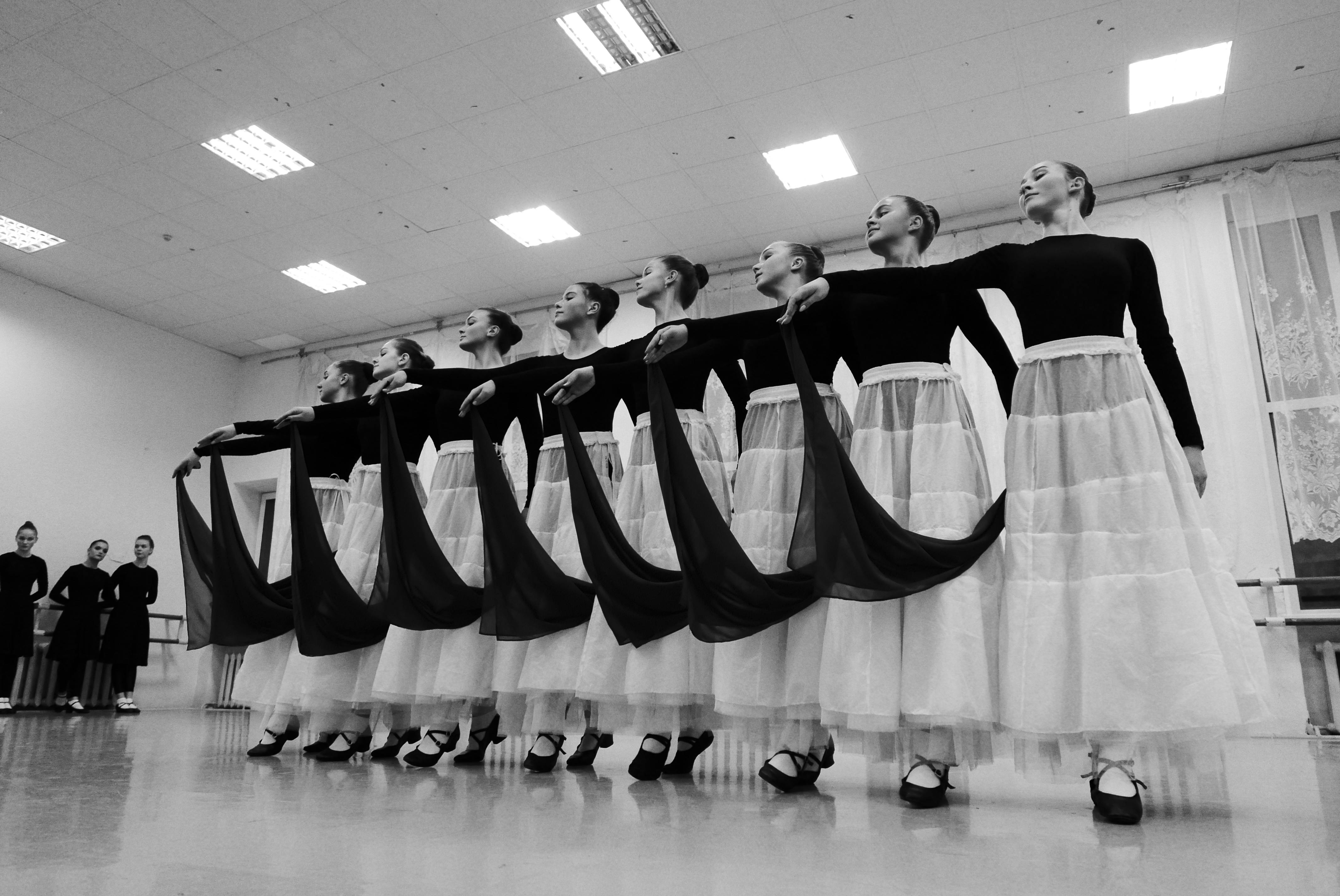What To Wear To Dance Class

Going to dance class can be an exciting experience, but it can also be a bit overwhelming if you are not sure what to wear. Knowing what to wear to dance class is important, as the right outfit not only helps you look and feel your best, but also keeps you comfortable while moving and dancing. So, if you’re wondering what to wear for your next dance class, read on for tips on picking the right outfit.Dance class is a great way to get your body moving and stay in shape. To get the most out of your dance class experience, it’s important to wear the right clothes. Choose comfortable clothing that allows for plenty of movement such as fitted leggings or shorts with a light tank top or t-shirt. You’ll also want to make sure you have the right shoes – either jazz or ballet shoes for ballet classes, and gym shoes or jazz shoes for other types of dance classes. Avoid wearing baggy clothes like jeans or sweatshirts, as these can be restricting and uncomfortable during your class. Finally, make sure to bring a water bottle and hand towel so that you can stay hydrated and comfortable throughout your workout.
Choosing Clothing for Dance Class
Choosing the right clothing for your dance class is an important part of any dancer’s practice. Not only does it help you to move freely and comfortably as you dance, but it also helps you to look your best on stage. There are a few key elements to consider when selecting your dance clothing, such as the type of fabric, fit, and style.
When choosing fabrics for your dance wardrobe, look for fabrics that are lightweight and breathable. Cotton is a great choice as it is lightweight and comfortable, while still offering great support. You should also look for fabrics with a slight stretch, such as Lycra or spandex. These fabrics provide extra flexibility in movement as well as a snug fit.
The fit of your dance clothing is also important in order to ensure that you can move easily and comfortably throughout your routine. Look for clothing that fits snugly but not too tightly so that you can move freely without any restrictions or discomfort. Avoid baggy clothing that may bunch up or create distractions during performance.
Finally, the style of your dance clothes should be appropriate for the type of dance you are performing. Look for clothes that will complement the style of choreography while still allowing freedom of movement. For example, if you are performing jazz or hip-hop moves, opt for baggy t-shirts and shorts rather than traditional ballet leotards and tights.
With these tips in mind, you can easily find the perfect outfit for any type of dance class or performance! Remember to choose materials that allow free movement while still looking great on stage!
Footwear for Dance Class
When you’re learning to dance, it’s essential to wear the right footwear. The right pair of shoes can make a huge difference in your ability to learn and practice the various dance techniques, as well as protect your feet from injury. Different types of dance require different types of shoes, so it’s important to know what type of shoes you need for the type of dancing you plan on doing.
For ballet, the traditional choice is ballet slippers. Ballet slippers should fit snugly and provide adequate arch support. They should be flexible enough to allow your feet to move freely but also provide enough stability for pointe work and jumps. The soles should be made from leather or canvas, and they should be made from materials that will not slip as you move across the floor.
Jazz and tap dancing require a different type of shoe than ballet does. Jazz shoes are usually leather or canvas slip-ons with a flexible split sole to provide more traction when turning or sliding across the floor. Tap shoes have metal plates on the toes and heels that produce tapping sounds when tapped against the floor. Tap shoes typically have a thicker sole than jazz shoes, and are often designed with elastic bands for better fit and comfort.
Modern dance is another genre that requires special footwear. Modern dance shoes tend to be more minimalistic than other types of dance footwear; they are usually just simple slip-ons that offer little arch support but still provide enough protection for your feet while dancing. Many modern dancers opt for barefoot dancing too, which allows for greater freedom of movement but may leave your feet more vulnerable to injury if done incorrectly or overused.
No matter what type of dance you are planning on practicing, it’s important to make sure that you have the right footwear so that you can practice safely and effectively. Make sure that whatever pair you choose fits comfortably and provides adequate foot support so that you can focus on perfecting your technique without worrying about hurting your feet in the process!
Accessories for Dance Class
Dance classes require a variety of accessories to ensure safety and comfort for the dancer. The most common items needed are dance shoes, tights, and leotards. Other accessories such as ballet skirts, leg warmers, and hair accessories may also be needed depending on the style of dance being taught.
Dance shoes are an essential item for any dancer. They provide support and stability during movement, as well as a non-slip grip when dancing on hardwood or tile floors. The type of dance shoe required will depend on the style of dance being taught. Ballet dancers usually wear a split sole canvas or leather slipper, while jazz dancers may require a fitted jazz shoe with leather soles for added grip.
Tights are also an important accessory in dance classes. They help to keep the muscles warm during stretching exercises and protect the skin from any chafing that may occur when wearing shorts or a leotard without tights underneath. Tights come in various styles including footless, stirrup, and convertible tights that can be worn multiple ways depending on what is required in class.
Leotards are another popular item worn by dancers in class. They offer support to the body while still allowing freedom of movement during exercises and dances. Leotards come in various styles including sleeveless, long sleeve, tank top, and even hooded styles that can be used to keep warm during rehearsals or performances outdoors in colder weather.
Ballet skirts can be worn by female dancers in ballet classes to add an element of gracefulness to their movements. These skirts usually cover only part of the legs and come in various lengths ranging from mini-skirts to full-length skirts with tulle layers for a more romantic look while dancing en pointe.
Leg warmers can also be used by dancers for added warmth while stretching before class begins or after it has ended if they are taking multiple classes back-to-back throughout the day at a studio or school setting. Leg warmers come in various colors and fabrics such as cotton or wool for extra insulation against cold floors during practice sessions indoors or outdoors.
Hair accessories such as hairbands, clips, bobby pins, elastics, barrettes, scrunchies are also necessary items depending on the style of dance being taught as some require dancers to have their hair tied up off their face so they can see clearly while performing steps and combinations taught by their instructor.
Overall these accessories play an important role in helping dancers feel comfortable throughout their lessons so they can focus more intently on perfecting their technique without worrying about slipping or having limited movement due to improper attire.
Finding the Right Hair Styles for Dance Class
Finding a hairstyle for dance class can be difficult. While some dancers prefer to wear their hair down, others opt for a more secure style that won’t move around while they perform. Fortunately, there are a few hairstyles that can be used for both comfort and style during dance class. Whether you have long or short hair, there is a style out there for you.
For those with long hair, braids are an ideal choice. Braids provide the security of an updo while still allowing the dancer to keep their hair down. French braids and Dutch braids are both popular options, as they provide extra hold throughout class and can be styled in many different ways. Adding ribbons or other accessories to the braid provides an added touch of flair when performing on stage.
For those with short hair, a bun is probably the best option. Buns come in all shapes and sizes, so it’s easy to find one that works well with your face shape and hairstyle. The great thing about buns is that they provide extra security during class without having to sacrifice any of your movement or range of motion. Buns come in various styles such as high buns, low buns, side-swept buns, and messy buns – so you’re sure to find one that works perfectly for you!
Finally, if you have medium length hair then half-up half-down styles may be your best bet. Half-up half-down styles are perfect for those who want the security of an updo without sacrificing any length or volume from their hair. These styles also provide plenty of movement during class which is essential for dancers who need extra flexibility when performing their routines.
Finding the right hairstyle for dance class doesn’t have to be difficult! With so many different options available – from braids to buns – it’s easy to find the perfect style that will keep your hair secure while still allowing you to show off your moves on stage!

Picking the Right Outfit for Dance Class
Choosing the right outfit for dance class is an important part of participating in a dance class. Not only does it help you look and feel your best, but it also ensures that you are safe and comfortable while you’re dancing. Here are some tips to consider when picking the right outfit for your next dance class:
Comfort is key – When choosing an outfit for your dance class, comfort should be your top priority. Make sure to choose clothing that allows you full range of motion and won’t restrict your movements. The last thing you want is to be held back by clothing that doesn’t fit properly or isn’t comfortable.
Choose the right fabrics – Different types of fabric can affect how comfortable you are while dancing. Cotton and other breathable fabrics are great for keeping you cool and helping to wick away moisture during those intense dance classes.
Go with practical – You want to make sure that whatever you wear is practical for the type of dancing that you’ll be doing. For example, if you’re taking a hip-hop class, then shorts might be a better option than long pants or a skirt.
Consider safety – It’s important to consider safety when picking out an outfit for your dance class. Make sure that any jewelry or accessories don’t have sharp edges that could potentially injure yourself or someone else. Also, try to avoid wearing shoes with heels as these can create an unsafe environment on the dance floor.
Have fun – Ultimately, it’s important to remember that having fun should come first when dressing for your next dance class! Choose clothes that make you feel confident and look great so that you can focus on having a blast while dancing!
Comfort is Key in Dance Classes
Dance classes can be an enjoyable experience for everyone involved. Whether you are a beginner or advanced dancer, it is important to feel comfortable and supported when taking classes. Comfort is key for dancers to express themselves and grow in their art.
The right clothing can play an important role in providing comfort while taking dance classes. Loose fitting clothes that allow movement are best for dancing. They should also be breathable fabrics, such as cotton or polyester, so that the dancer does not get too hot during class. It’s also important to select shoes that provide support and grip on the floor, so dancers can move safely and confidently.
In addition to clothing, environment plays a major role in providing comfort during dance class. The studio should be a safe space for dancers to express themselves freely without judgment. If possible, studios should have mirrors so dancers can observe themselves as they move and ensure they are doing the steps correctly. Temperature should also be taken into consideration; if it is too hot or cold it can distract from the learning process and make it difficult to focus on the choreography being taught.
Above all else, comfort comes from feeling supported by both the teacher and classmates. Instructors should create a positive atmosphere where dancers of all skill levels are encouraged to take risks and explore their creativity without fear of failure or criticism from others. Teachers should also give frequent feedback on technique with constructive criticism rather than harsh judgement when mistakes are made.. Finally, having classmates who cheer each other on creates an uplifting environment which contributes to feeling comfortable in class.
Comfort is a key factor for success in dance classes – both physically and mentally – so it’s important to create an environment that encourages growth while keeping everyone feeling supported and safe!
Dressing Appropriately
When attending a dance class, it is important to dress appropriately. Appropriate attire is not only important for the safety of the dancer, but also to ensure that the class runs smoothly and efficiently. Proper clothing helps the instructor to see how well students are performing the steps and will also help prevent injuries.
What to Wear
It is important to wear clothing that allows for freedom of movement while still providing support and coverage. For women, leotards, tank tops, or form-fitting shirts paired with tights are usually best. For men, a t-shirt and shorts or sweatpants are usually appropriate. It is also important to wear shoes that provide support and protection for the feet while dancing – ballet slippers or jazz shoes are typically recommended. Additionally, dancers should consider wearing additional layers such as sweaters or leg warmers in order to keep warm during class.
Other Considerations
In addition to choosing clothing that allows for freedom of movement, dancers should be mindful of their hairstyle when attending class. Keeping hair off of the face will help prevent it from getting in the way of movements. It is also important to remove any jewelry or accessories that may get in the way during class as they can be dangerous if caught on something or someone else during a movement. Finally, dancers should avoid wearing excessive makeup as it can be distracting and can run if they start sweating during class.
By following these guidelines for dressing for dance class, students will be able to dress appropriately while still allowing for maximum comfort and safety during their classes.

Conclusion
Dance classes are a fun way to get exercise and learn some new moves. But the wrong kind of outfit can make it difficult to move freely. The most important thing is to dress in clothing that allows you to move freely and comfortably. Opt for lightweight fabrics such as cotton, nylon, and spandex in a variety of lengths. Avoid wearing anything too baggy or restrictive, and make sure your shoes fit properly and provide adequate support. You can also add layers, such as a hoodie or wrap sweater, for additional warmth when needed. With the right outfit, you’ll be able to dance with ease and enjoy your class even more!
At the end of the day, you should wear whatever makes you feel comfortable and confident while dancing. After all, having fun is the key to improving your skills!
